9 Native Plants for Your Washington DC Landscape
BY STUART KUSHNER | APRIL 18TH, 2023 | LAWN CARE, WASHINGTON DCSo, you just installed a new lawn. What next? How about choosing plants to finish off your landscaping? But not all plants are ideal for DC’s climate, which ranges from cold and snowy in the winter to steamy in the summer. Consider going with native these nine plants that look great and are well-adapted to our four seasons in Washington.
The top candidates are:
Benefits of Native Plants
Native plants have adapted to the our climate, meaning they don’t need as much maintenance as non-native plants. They also come with the following benefits:
- They attract birds and other pollinators to your garden
- They don’t need as many fertilizers, pesticides, or water, saving you money
- They have a positive impact on the local ecosystems
Trees
Flowering Dogwood (Cornus Florida)
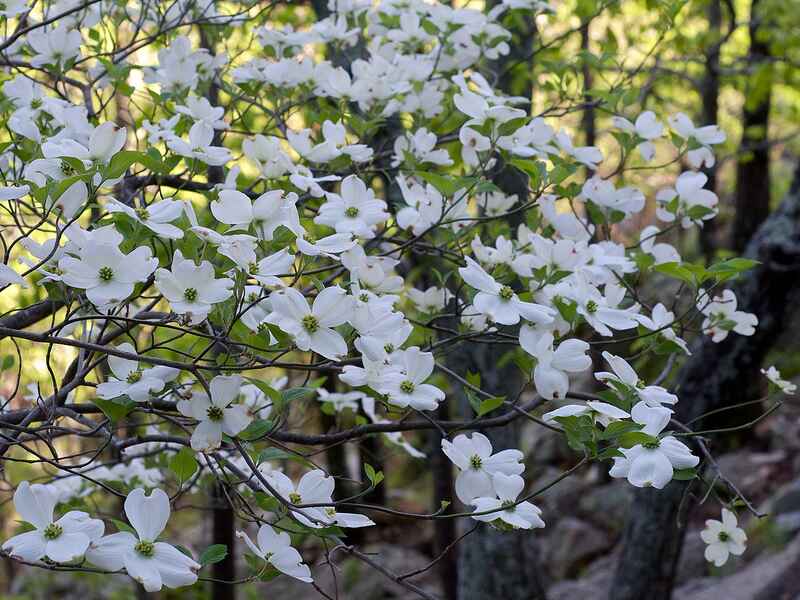
Photo Credit: Eric Hunt / Wikimedia Commons / CC BY-SA 4.0
Found in gardens and yards throughout the DC area, the flowering dogwood is a popular and well-recognized small tree. White, showy, fragrant flowers bloom in the spring (which attract pollinators like bees and butterflies), giving way to red berries in the fall.
While stressed, flowering dogwoods are susceptible to diseases like powdery mildew, although none are life-threatening.
Hardiness zones: 5 to 9
Sun: Grows best in partial shade but can tolerate full sun
Water needs: Medium
Soil: organically rich, moist, acidic soil
Duration: Perennial
Mature height: 15 to 30 feet, sometimes reaching 40 feet.
Eastern Redbud (Cercis canadensis)
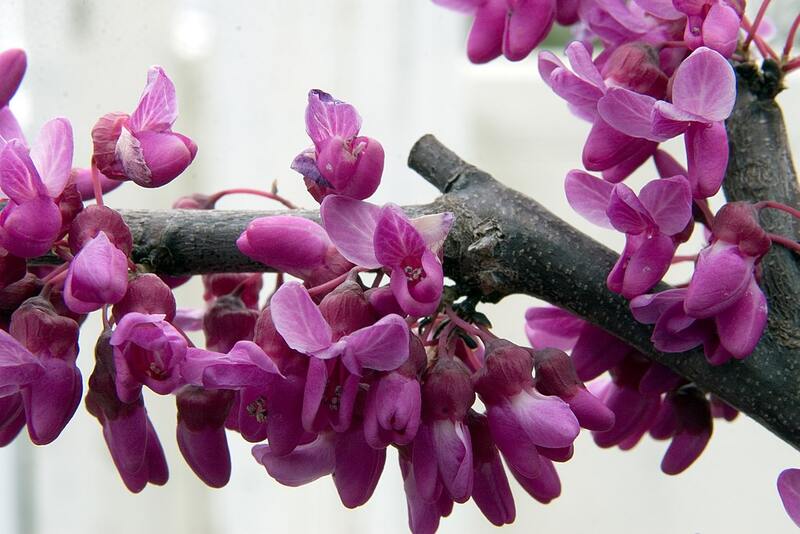
Photo Credit: David J. Stang / Wikimedia Commons / CC BY-SA 4.0
With its beautiful pink and purple spring flowers and heart-shaped leaves, the eastern redbud is a DC favorite. It’s used as a garden accent under larger trees. Wildlife love the pods that release seeds in the fall.
The eastern redbud’s stems can come down with canker (a fungus), but pruning them eliminates the infection.
Hardiness zones: 4 to 9
Sun: Full sun, partial sun, full shade
Water needs: Dry or moist soil
Soil: Any moist, well-draining, nutrient-rich soil
Duration: Perennial
Mature height: 20 to 30 feet tall, with a 25- to 35-foot spread.
Serviceberry (Amelanchier canadensis)
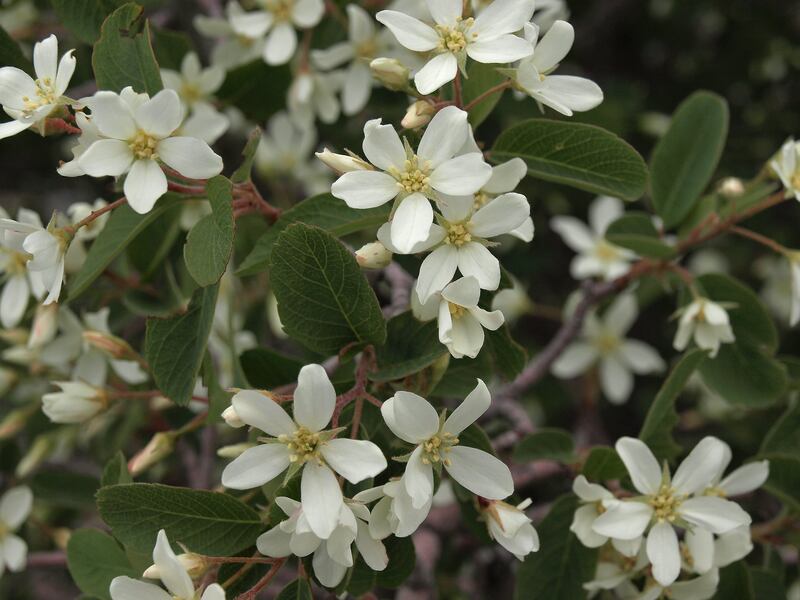
Photo Credit: Jim Morefield / Flickr / CC BY-SA 2.0
If you need a small tree for your garden, consider the serviceberry. This early flowering tree has edible fruits (similar to blueberries) and, in the fall, brilliant orange-red foliage. Its flowers provide pollen and nectar to beneficial insects and birds.
Serviceberries are vulnerable to diseases, which can make their fruit inedible to people (but not wildlife). Disease severity varies from year to year, partially due to weather conditions.
Hardiness zones: 4 to 8
Sun: Full sun, partial shade
Soil: Acidic, moist, and well-drained soils
Duration: Perennial
Mature height: 15 to 25 feet tall, with a 15- to 25-foot spread.
Shrubs
Arrowwood Viburnum (viburnum dentatum)

Photo Credit: David J. Stang / Wikimedia Commons / CC BY-SA 4.0
No matter the season, the arrowwood viburnum offers something of interest. White flowers bloom in late spring, followed by blue and black drupes (fruits) in the summer and fall, which birds and small animals love. In the fall, arrowwood viburnum turns yellow, orange, or red.
Arrowwood viburnum prefers dry, moist, or wet soils and full to partial sun. It grows in an irregular, rounded shape.
Sun: Full sun, partial sun
Water needs: Dry, moist, or wet soil
Soil: Loam or sand
Duration: Perennial
Mature height: 6 to 10 feet tall
Winterberry Holly (Ilex verticillata)
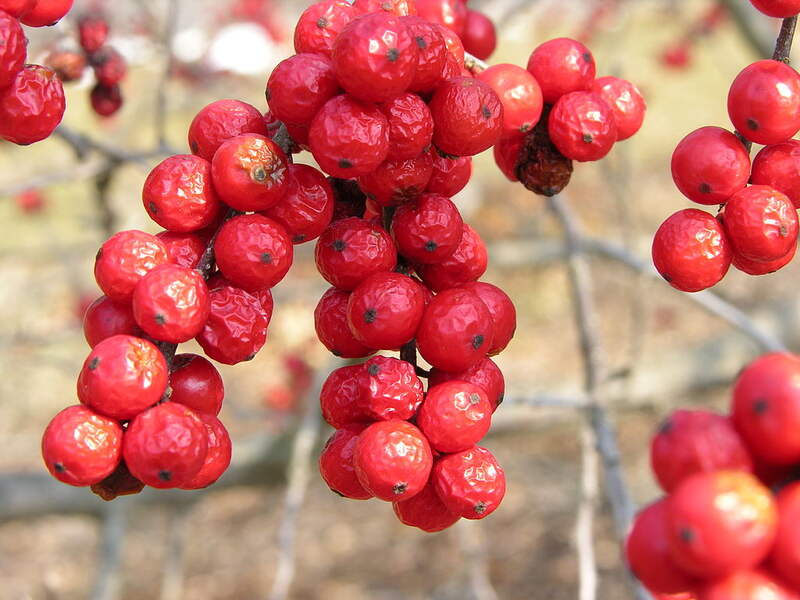
Photo Credit: Derek Ramsey / Wikimedia Commons / CC BY-SA 2.5
If you’re looking for a shrub that provides beauty in the winter months, the winterberry holly is a good choice. In the fall, it loses its leaves and grows bright red berries that birds and moths love.
Winterberry holly is dioecious, meaning there are male and female flowers on separate plants. The females produce berries, while the males provide the pollen the females need.
Some winterberry hollies bloom earlier than others. The more overlap between male and female blooms, the better the pollination and berry production.
Sun: Full sun, partial shade
Water needs: Moist or wet soil
Soil: Moist, well-drained, acidic (doesn’t like neutral or basic soils)
Duration: Perennial
Mature height: 6 to 12 feet tall
American Beautyberry (Callicarpa Americana)
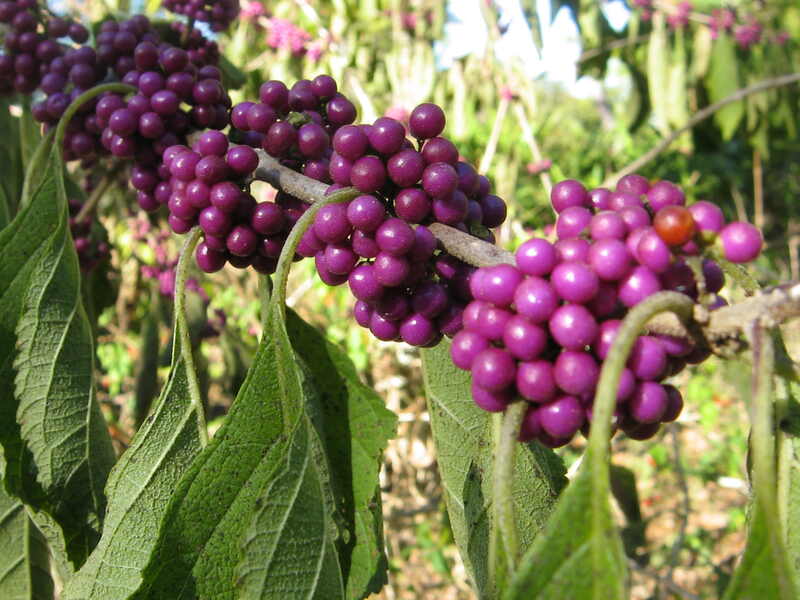
Photo Credit: Korall / Wikimedia Commons / CC BY-SA 3.0
You would expect a plant with “beauty” in its name to be beautiful, and the American beautyberry delivers on that front. Lavender flower clusters appear in the summer, giving way to magenta fruit in the fall.
If you want the best fruit, plant the American beautyberry in full sun and dry, acidic soils. However, this shrub manages just fine in partial shade.
Hardiness zones: 7 to 11
Sun: Full sun to partial shade
Soil: Loam, sand
Duration: Deciduous perennial
Water needs: Low (one inch per week)
Mature height: 4 to 8 feet
Ground Covers
Partridge Berry (Mitchella repens)
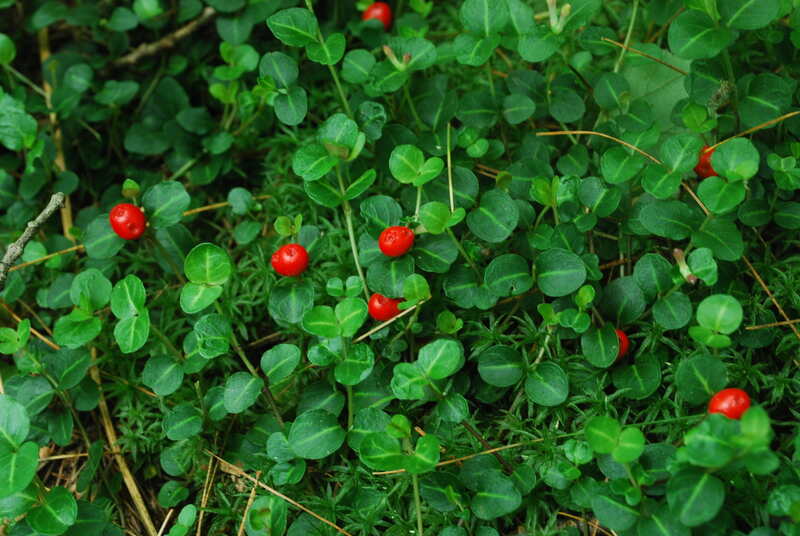
Photo Credit: Joshua Mayer / Flickr / CC BY-SA 2.0
Another favorite of winter gardens, partridge berry has deep, dark-green leaves and scarlet berries. In late spring, pairs of white flowers bloom. Both flowers in each pair need pollination before a single berry appears.
Partridge berries prefer shade but accept the morning sun. When planted in the garden, they’ll form a thick ground cover and only demand you keep garden debris away from them.
Sun: Full sun to deep shade
Soil: Acidic, good drainage, moist, occasionally dry
Duration: Perennial
Water needs: Moist or wet soil
Mature height: 1 to 3 inches
Flowering Plants
Swamp Milkweed (Asclepias incarnate)
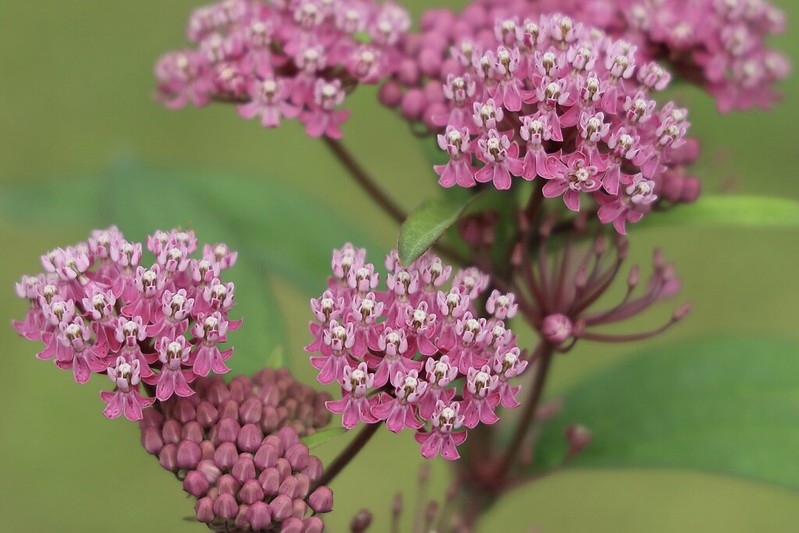
Photo Credit: Lydia Fravel / Flickr / CC BY 2.0
Want pollinators? Plant swamp milkweed. This plant attracts numerous beneficial insects, hummingbirds, and native bees. It grows flat clusters of pink and white flowers, and exudes a milky juice when broken.
Swamp milkweeds thrive in any type of garden soil as long as it doesn’t completely dry out, especially in the spring. Because of this, it’s a great addition to a native plant garden.
Sun: Full sun to partial shade
Soil: Clay or loam
Duration: Perennial
Water needs: Moist or wet soil
Mature height: 4 to 6 feet
Red Columbine (Aquilegia canadensis)
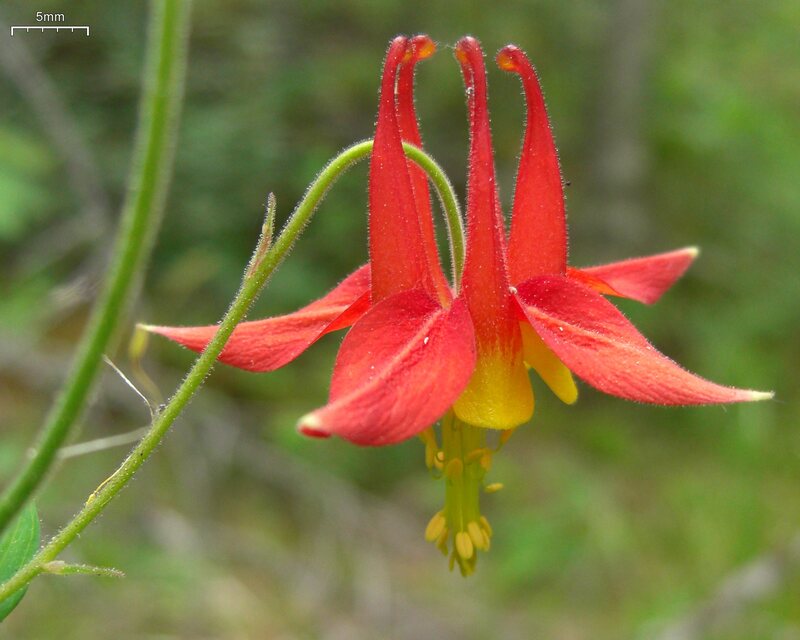
Photo Credit: Jason Hollinger / Wikimedia Commons / CC BY 2.0
Continuing with pollinator favorites, we have the red columbine. Its nodding, red, bell-like flowers attract hummingbirds and butterflies. It generally lives 3 to 5 years and doesn’t need to be divided. However, it needs sun to partial shade and dry and moist soil.
Sun: Full sun or partial shade
Soil: Clay, silt, or sandy soil that’s well-drained, moist, dry-ish
Duration: Perennial
Water needs: Weekly or whenever the soil is completely dry
Mature height: 1 to 3 feet
FAQs
You can plant perennials as early as February. If you have any annuals, plant them in April.
Invasive plants are non-native plants that can cause economic, environmental, and health harm. They don’t have natural predators, produce many seeds, and grow aggressively.
It isn’t recommended, as poaching seeds and plants from wild areas will deplete these areas of the seeds they need to be self-sustaining. Nurseries will raise these native plants or ensure they weren’t stolen from the wild.
Where to Purchase Native Plants in Washington DC
Take a look at your backyard. You might have some of these plants growing there. If you don’t, or if you want to buy more, the nation’s capital has plenty of nurseries to buy them, such as:
Once you buy your fill of native plants, your lawn is next. Outfit it with some of the best grass types in Washington, DC, to ensure the healthiest lawn possible. However, you don’t need to lift a finger, unless it’s to pick up your cell phone and call one of Wikilawn’s local pros to do the work for you.
Main Image Credit: cultivar413 / Flickr / CC BY 2.0